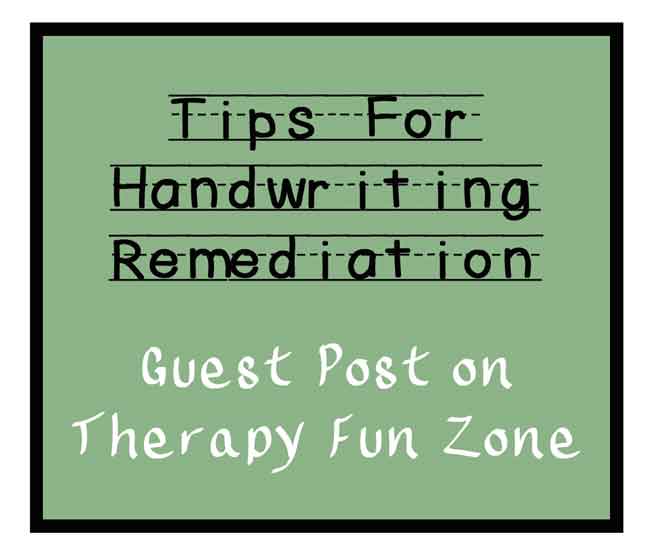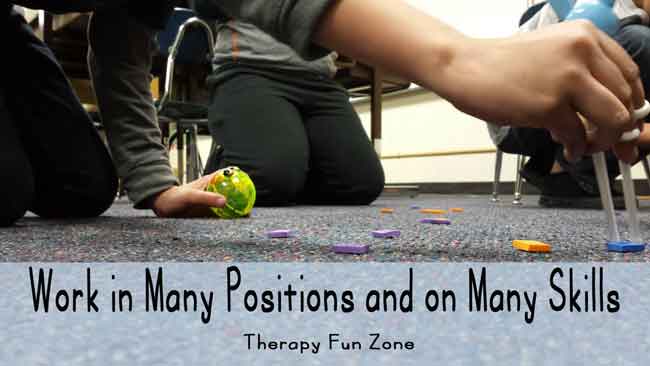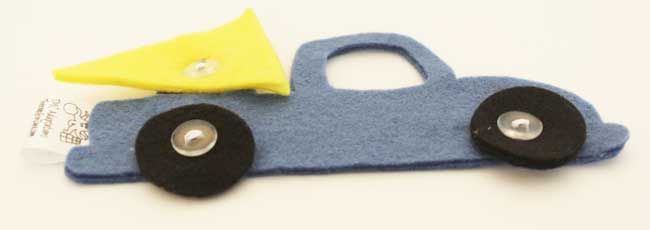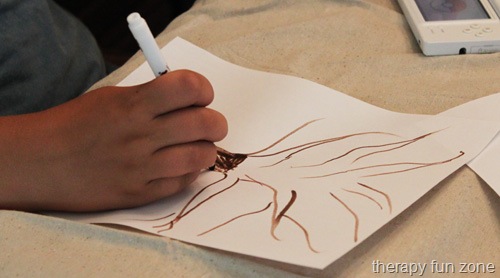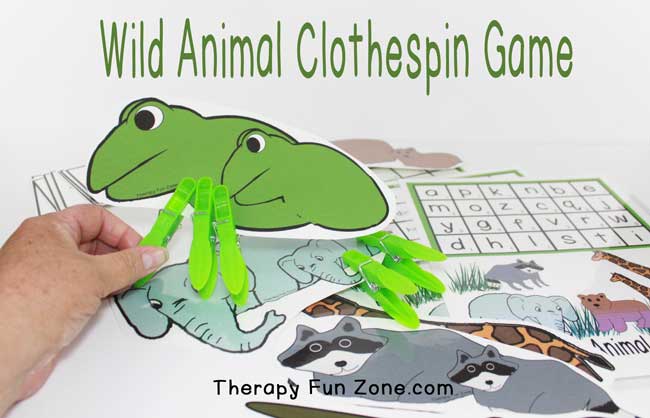Restricting Children’s Movement and Play Time Causes More Harm Than Good
This post may contain affiliate links.
Sit Still! Be Careful! Stop Spinning! Get Down From There!
Why restricting children’s movement and limiting their ability to play outdoors causes more harm than good
This is a guest post by Angela Hanscom, Pediatric Occupational Therapist and Author of Balanced and Barefoot. You can also find the Balanced and Barefoot book on Amazon.
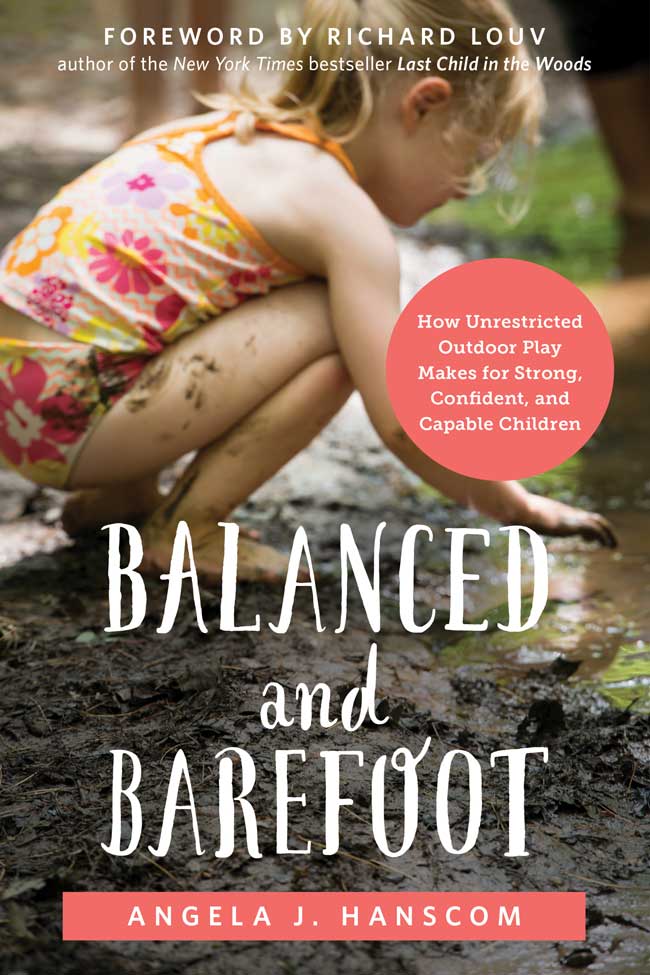
As a parent of two young children, I can empathize with the parental fear that habitually gets in the way of childhood risk-taking. Our parental instincts often take over and we shout, “Be careful!” or “Slow down!” as we watch a child climb on top of boulders or speed across uneven terrain. However, as a pediatric occupational therapist that spends countless hours observing children play in a natural environment, I also know that restricting children’s movement and limiting their ability to play outdoors can cause more harm than good.
Let’s take a closer look at how restrictions can impact our children.
Beware of the Baby Devices!
Although baby equipment (i.e., infant carriers, backpacks, bouncy chairs, etc.) can be helpful and convenient, using them to contain infants for most of their day immobilizes infants and places continuous gravitational forces on certain points of the body over and over. Overtime, this can alter walking and movement patterns.
Constantly being on the back also allows for little to no movement of the neck, spine, or
body. Babies need movement through the center of their body, in order to start to develop essential core and neck strength. A strong neck and core lay the foundation for many other developing skills such as fine motor skills, visual skills, body awareness, coordination, and balance. Frequent time on the floor (both on the belly and back) allow babies to move their limbs freely, explore and touch their surrounding environment, and start to develop strong muscles and bones.
The “Sit Still” Mandate
A local elementary-school teacher informed me that children are expected to sit for longer periods of time than in years past. Maybe you’ve noticed this trend with your own children and are surprised at how much time they are expected to sit.
The bottom line is this: it is hard to pay attention when you are not allowed to move for extended periods of time. This is why children fidget! In order to remain alert, children activate the vestibular system by moving back and forth in their chair. This movement turns the brain on to pay attention. It’s not that these young students are trying to be disruptive or not interested in learning—to the contrary! They are in fact straining all of their resources to be able to listen and learn. The classic sign that kids are not getting enough movement throughout the day is when they are wiggling, rocking, and twisting their bodies about.
Screen Time is Taking Over
According to the American Academy of Pediatrics (AAP), a recent study states that the average child spends EIGHT hours a day on screens (i.e., watching television, video games, computers, iphones, etc.) a day. Older children and adolescents are spending an average of ELEVEN hours a day on screen. And 75% of 12-17 year olds have their own cell phones. Nearly all teens participate in text messaging (AAP, 2013).
Many parents these days have gotten into the habit of feeling like they need to constantly entertain their children every minute of every day. When they need to do some chores or take a shower, they use the television or games as a babysitter. At a really young age, the child becomes used to this mode of being. The effects? Children become unable to think for themselves, lose the ability to imagine, and essential play skills are hindered.
Most importantly, video games and watching television are addicting and take precious time away from play – especially play outdoors. Instead of being fully immersed in a game of whiffle ball out in the field with friends, where children practice negotiating the rules, running the bases, and stimulating the senses in a healthy way. Children are indoors and sitting again.

Give the Gift of Free Play to Your Child
Unrestricted and unsupervised play is one of the most valuable educational opportunities that we can offer our children. Play allows children opportunities to get creative, develop play schemes, practice regulating their emotions, enhance their social development, and even learn about themselves in the process. Having the ability to play away from the adult world, opens up many opportunities and feelings of freedom. It is fertile ground, a blank slate on which children develop their own stories and preferences. Children take ownership over their play experiences and start to get creative with what is around them. A stick can become a wand, a weapon, a fishing pole, a horse on which to gallop, a building material, or a tool. Leaves can become an ingredient for soup, a prop for art, medicine, money, décor, etc. The possibilities are endless.
 Angela Hanscom is a pediatric occupational therapist, author of BALANCED AND BAREFOOT: How Unrestricted Outdoor Play Makes for Strong, Confident and Capable Children, and the founder of TimberNook—a developmental nature-based program. She holds a master’s degree in occupational therapy and an undergraduate degree in kinesiology (the study of movement). She has been a frequent contributor to the Washington Post and featured on the NPR education blog, Johnson & Johnson TEDx talks, The Huffington Post, ChicagoNow, Times of India, Jerusalem Post, Children & Nature Network, and MindShift.
Angela Hanscom is a pediatric occupational therapist, author of BALANCED AND BAREFOOT: How Unrestricted Outdoor Play Makes for Strong, Confident and Capable Children, and the founder of TimberNook—a developmental nature-based program. She holds a master’s degree in occupational therapy and an undergraduate degree in kinesiology (the study of movement). She has been a frequent contributor to the Washington Post and featured on the NPR education blog, Johnson & Johnson TEDx talks, The Huffington Post, ChicagoNow, Times of India, Jerusalem Post, Children & Nature Network, and MindShift.
For more information visit www.balancedandbarefoot.com



